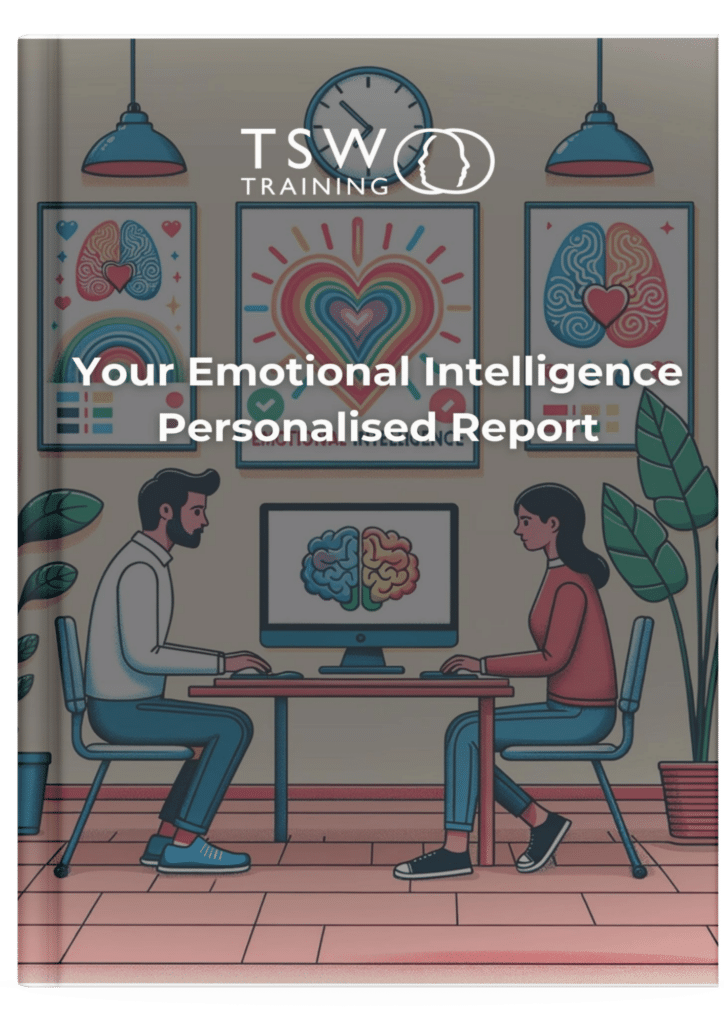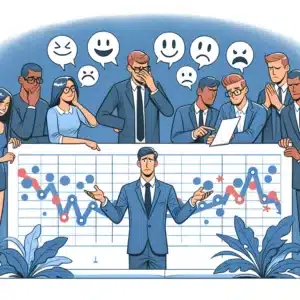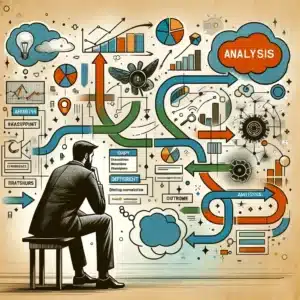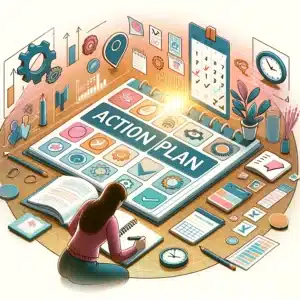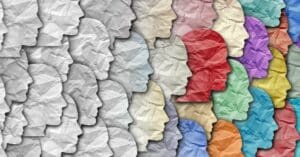Understanding and leveraging the Gibbs Reflective Cycle is crucial in the quest to become an impactful leader.
This powerful tool offers a structured approach to personal and professional growth through reflective practice, enabling leaders to transform experiences into valuable lessons and future outcomes.

In this article, you will learn about:
- The six pivotal stages of Gibbs Reflective Cycle and their significance.
- Practical applications of the Gibbs model in various situations and scenarios.
- How to integrate reflective practice into your leadership style for continuous improvement.
- BONUS: You can download a Gibbs Reflective Cycle Template for free
What is the Gibbs Reflective Cycle?
Gibbs’ Reflective Cycle is more than just a theoretical model (which is why we like it); it’s a practical tool that empowers leaders and professionals to turn their experiences into actionable insights.
Developed by Professor Graham Gibbs, the reflective cycle comprises six stages that you can use to guide you through a structured process of reflection.
By engaging with each stage — Description, Feelings, Evaluation, Analysis, Conclusion, and Action Plan — you’ll gain a deeper understanding of your experiences, enhancing your leadership skills, decision-making ability, and emotional intelligence.
This cycle encourages a review of events and a critical analysis of emotions and reactions, providing a comprehensive framework for self-improvement and personal and professional growth.
Embrace Gibbs’ Reflective Cycle to refine your leadership approach, learn from your experiences, and foster a culture of continuous improvement within your team.
Professor Graham Gibbs: The Mind Behind the Reflective Cycle
Professor Graham Gibbs, an esteemed American psychologist and sociologist, is famous for his significant influence on teaching, learning methods, and assessment.
His pioneering work in 1988, the book ‘Learning by Doing: A Guide to Teaching and Learning Methods,’ revolutionised teaching methods in education. In this work, Gibbs’ theory of reflection stresses the vital role of hands-on experience and active experimentation in learning.
Collaborating with Bob Farmer and Diana Eastcott, Gibbs pointed to the critical nature of reflection in the learning journey. And, with that, he offers the reflective cycle, an innovative tool that can deepen understanding and enhance skill development through introspection.
Embracing this model and its six stages can be transformative, enabling learners and leaders alike to evolve continuously from their experiences.
What are the six stages of Gibbs’ reflective cycle?
The stages of the Gibbs cycle are:
- Description
- Feelings
- Evaluation
- Analysis
- Conclusion
- Action plan
Gibbs Reflective Cycle Diagram
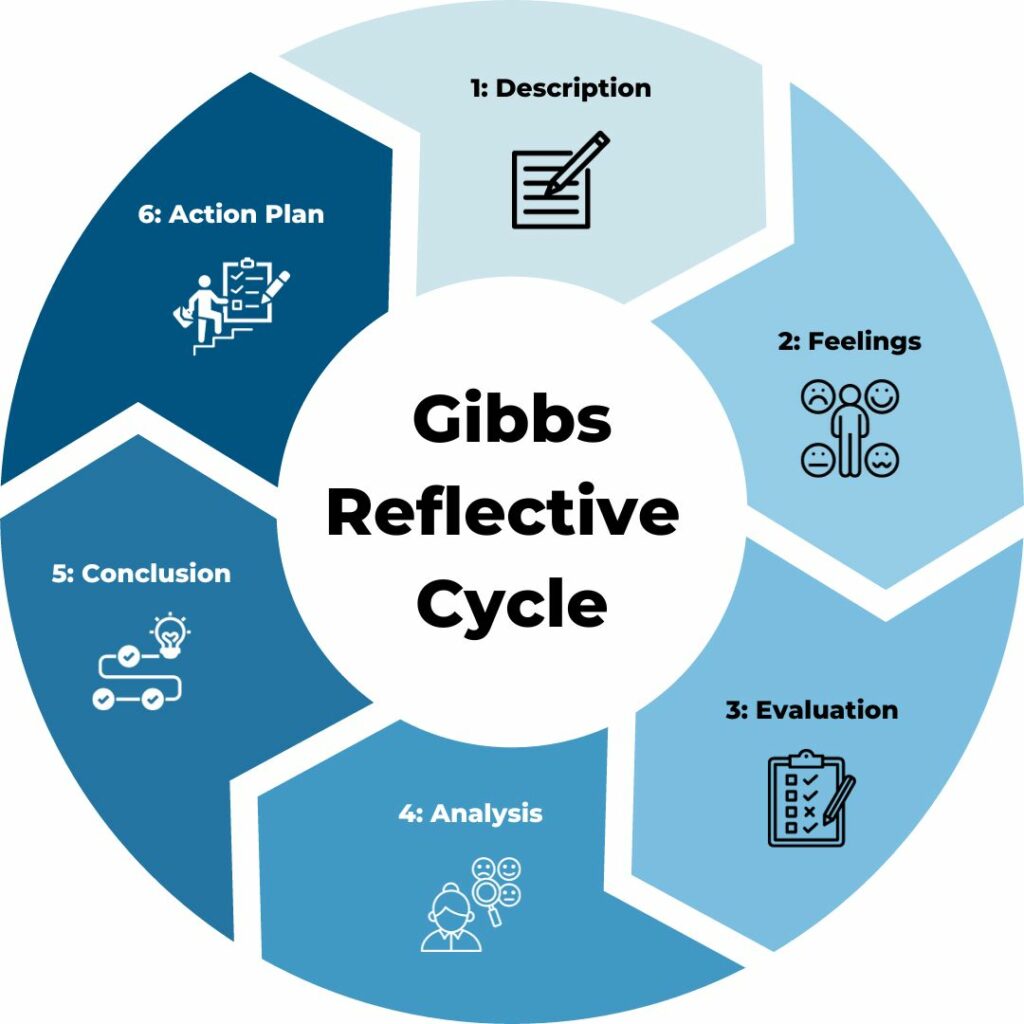
Gibbs Reflective Cycle 1988
Gibbs Reflective Model Stages: In-Detail
Let’s look at each stage of the reflective model and explore some examples of the Gibbs model of reflection in action.
#1. Description: Your First Step in Reflection
As you begin with Gibbs’ Reflective Cycle, the Description stage is where you set the stage for insightful reflection. It involves describing the situation exactly as it occurred without adding interpretations or emotional responses.
Here’s what you need to do:
- Context: Identify where and when your event took place. Was it during a meeting, a project, or a casual interaction?
- Participants: List who was involved. Consider everyone who played a part, no matter how small.
- Sequence of Events: Detail what happened in the order it occurred. Think of it as narrating a story, just the facts.
- Purpose: Reflect on the reason behind the event. What was the goal or intention at that time?
- Outcome: Conclude with what resulted from the situation. What was the end result?
Remember, at this stage of the reflective process, you focus on painting a clear and accurate picture of the event, free from personal interpretation or emotional bias.
A Description Stage Example
Imagine you’re reflecting on a critical team meeting you had for a new project launch.
- Start by detailing the setting: a conference room on a Tuesday morning.
- Describe the agenda: discussing project roles, timelines, and deliverables.
- List the participants: project manager, team leads, and marketing representatives.
- Recount the key discussions: assigning tasks, setting deadlines, and addressing concerns about resource allocation.
- Conclude with the meeting’s outcome: decisions made, action items assigned, and any unresolved issues.
This detailed, objective description sets the stage for a deeper, more insightful reflection in the following stages.”
#2. Feelings: Dive into Your Emotional Response
In this stage, you’ll explore the emotional aspect of your experience, which will call for some self-reflection and self-awareness. Here’s what to focus on:
- Initial Emotions: Think back to the moment of the event. What emotions were you experiencing? Try to recall your first gut reaction.
- Subsequent Feelings: After the event, how did your emotions shift? Reflect on any changes in your feelings as time passed.
- Impact on Others: Now, put yourself in the shoes of others involved. How might they have felt? Observe any reactions or feedback you noticed.
A Feelings Stage Example
Consider a scenario where you were part of a heated project meeting.
Initially, you might have felt defensive when your ideas were questioned. Your heart raced, and you were quick to justify your stance.
However, after the meeting, as you reflect, you start to see the situation differently. You realise that your colleagues’ challenges aimed to refine the project, not discredit your contributions.
This shift from defensiveness to understanding illustrates the importance of acknowledging and reflecting on your emotional journey in the Feelings stage of the cycle.
#3. Evaluation: Objectively Assessing the Situation
This stage is all about objectively evaluating the experience. Let’s break it down:
- Positives and Negatives: Reflect on the event. What aspects went well, and which didn’t? Try to be as unbiased as possible in your assessment.
- Overall Experience: Consider the experience as a whole. Was it generally positive or negative, and why do you feel that way?
- Your Role: Think critically about your own actions. How did what you did contribute to both the successes and challenges of the situation?
An Evaluation Stage Example
Imagine you’ve completed a project successfully, meeting all key deliverables and client expectations. However, during your reflection, you notice areas for improvement.
While the end result was commendable, the journey there revealed some communication gaps. Team updates were not always timely, leading to confusion and last-minute rushes.
This evaluation highlights a successful project outcome and underscores the need for better communication strategies to streamline future projects and reduce unnecessary stress.
#4. Analysis: Delving Deeper into the Experience
Now, it’s time to analyse the event more deeply. Focus on understanding the ‘why’ and ‘how’:
- Reasons Behind Outcomes: Reflect on why things turned out the way they did. What were the driving factors behind the positive or negative outcomes?
- Theoretical Connections: Can you link any theories or models to your experience? This can provide a deeper insight into your actions and their consequences.
- Alternate Scenarios: Imagine different actions you could have taken. How might these have changed the outcome?
An Analysis Stage Example
Let’s say you experienced a team conflict over project priorities.
In analysing this situation, you apply communication theories like the Transactional Model, which emphasises the dynamic nature of communication and feedback loops.
You realise that the conflict stemmed from different interpretations of project goals.
Reflecting on this, you consider alternative strategies, such as using a structured decision-making framework in future meetings to align everyone’s understanding and expectations.
This analysis helps you see how applying theoretical models and considering other approaches could have mitigated the conflict, providing valuable insights for managing similar situations in the future.
#5. Conclusion: Drawing Learnings from Your Experience
At this juncture, you’ll derive valuable lessons from the entire process. Your conclusion will help you consolidate what you’ve learned from the experience and develop strategies to apply in future situations.
Here’s how to approach your conclusion:
- Key Learnings: Reflect on what you’ve learned from this experience. What insights have you gained about yourself, others, or the situation?
- Possible Improvements: Think about what could have been done differently. Identify any missed opportunities or areas for personal growth.
- Skills for the Future: Consider what skills or knowledge could help you handle similar situations better in the future.
A Conclusion Stage Example
Imagine reflecting on a project that experienced significant delays.
Upon concluding your reflection, you recognise that these delays were largely due to last-minute changes and unclear task delegations.
You conclude that implementing a more robust project timeline and clear communication channels for change requests could significantly improve efficiency.
Additionally, you identify the need for regular team check-ins to ensure everyone is on track and that any potential delays are addressed promptly.
This conclusion highlights specific areas for improvement and sets a clear direction for enhancing project management strategies in future endeavours.
#6. Action Plan: Preparing for Future Application
In this final stage, you’ll create a plan for future situations. Let’s take a look at how you can do this:
- Implementing Changes: Based on your reflections, what specific actions will you take next time? Outline clear steps you plan to implement.
- Preventive Strategies: Consider how you can prevent negative outcomes in similar future scenarios. What practices or strategies will you adopt?
- Applying Insights: Consider using the insights gained to benefit your future experiences and leadership approach.
An Action Plan Example
Suppose you’re reflecting on a recent misunderstanding within your team due to unclear project guidelines. To prevent such issues in the future, you decide to create a detailed action plan.
First, you plan to develop a comprehensive communication protocol that clearly documents project guidelines and roles.
Second, you will implement bi-weekly check-ins with the team to ensure clarity and address any early concerns.
Finally, you commit to attend a workshop on effective communication to improve your skills. This action plan addresses the immediate issue and focuses on long-term improvements in team dynamics and your personal development.
Taking Action
The point of all this reflection is to use your reflective observations to learn and implement change. So, when creating your plan, it’s important to be systematic and practical.
Here are some tips on nailing your action plan:
- Document Your Plan: Select a medium that works best for you, whether it’s a digital tool like a project management app, a journal, or a simple notepad. The key is to use something you’re comfortable with and will regularly check.
- Set SMART Goals: Your action plan should include SMART goals – Specific, Measurable, Achievable, Relevant, and Time-bound. This framework ensures your goals are clear and attainable within a specific timeframe.
- Write Detailed Steps: Break down each goal into smaller, actionable steps. This makes your plan more manageable and easier to follow.
- Review and Adjust: Regularly review your action plan. Be open to making adjustments as needed, especially if circumstances change or if certain strategies aren’t working as expected. It’s called a reflective ‘cycle’ for good reason!
- Accountability: Consider sharing your plan with a mentor, colleague, or friend who can provide support and hold you accountable.
By following these steps, you can create a detailed and effective action plan that reflects your learnings and sets a clear path for future growth and improvement.
BONUS: Gibbs Reflective Cycle Template
We have just the thing if you’re looking for a simple template to use when recording your reflections.
As well as giving you a place to record your reflections, we have included some example questions (for each stage) to give you a nudge in the right direction. You can always come up with some helpful questions of your own.
Click here to download our Gibbs reflective model template.
How can leaders use the Gibbs Model of Reflection?
Reflective practice is a powerful tool for leaders, offering an opportunity to grow from every experience. By critically analysing their actions and decisions, leaders can uncover valuable insights that drive personal and professional development.
In fact, Studies in Korea have found that using critical thinking and reflection improves communication and confidence at work. By using Gibbs’ reflective cycle to learn from experience and develop your skills
Team Benefits from Reflective Leaders
Great leaders can encourage team members by demonstrating they can reflect on their own actions. In doing so, they can acknowledge where they make mistakes and turn a negative situation into a positive one.
Professional Benefits from Reflective Practice
Reflecting on your leadership style and identifying the skills you need to grow will almost certainly enhance your personal development and help you contribute to a successful business.
Become a better leader by using critical reflection regularly. Use it to focus on your own actions and seek feedback from others in your team, too.
Reflective practice solves immediate problems and contributes to long-term growth and your team’s overall success. It’s a win-win!
Gibbs Reflective Cycle Pros and Cons
As with any model, Gibbs’ reflective cycle has several advantages and disadvantages.
Advantages:
- Versatility: Gibbs’ cycle is adaptable to various professions and industries, making it a universally applicable tool.
- User-Friendly: The structured, step-by-step approach is straightforward and easy for anyone to follow.
- Flexible Timing: It allows for reflection at your own pace, fitting into various schedules and time constraints.
Disadvantages:
- Limited External Input: The model primarily focuses on personal reflection and may overlook the value of external feedback and perspectives.
- Self-Motivation Required: It demands a high degree of self-discipline and motivation to engage thoroughly in the process.
- Self-Evaluation Challenge: Providing honest and constructive feedback to oneself can be challenging and might require developing specific skills in self-assessment.
While its advantages include versatility, ease of use, and flexibility, the model also presents challenges like the need for self-motivation and limited external input.
Despite the negative aspects and limitations, the Reflective Cycle offers you a structured and effective approach to personal and professional growth and team development.
In fact, if you combine it with other (actionable) models and tools, such as the Blake Mouton grid and self-awareness tests/assessments, you will gain a more holistic view of situations you encounter. As a result, you’ll stand out as a leader who is self-aware, reflective and committed to growth.
Take our free emotional intelligence test today and get a detailed report with targeted tips and techniques to skyrocket your EQ.
